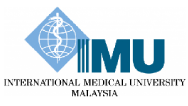Multiple Hepatic Haemangiomas: A Case Report
Authors: S T Kew, Wei Yen Lim
ABSTRACT
A healthy 30-year-old woman underwent health screening, and was incidentally found to have a well-defined echogenic lesion in Segment VI of her liver, measuring 4.2 X 1.8cm in her ultrasound scan. She was asymptomatic, has no cutaneous lesions, nor stigmata of chronic liver disease. She has no hepatomegaly. CT scan of her abdomen found multiple liver haemangiomas, varying in size from 21 X 28mm to sub-centimeter lesions.
Diagnosis of hepatic haemangioma in this patient is based on typical appearance on contrast imaging. Their appearance is important to recognise as they do not need intervention and attempts at instrumentation for diagnosis or surgery may result in more harm than good.
Keywords: Hepatic haemangioma (HH), Benign tumour of the liver, Conventional ultrasonography (US), Computer tomography (CT).
Citations: IeJSME 2022 16 (3): 22-24
DOI: https://doi.org/10.56026/imu.16.3.22



